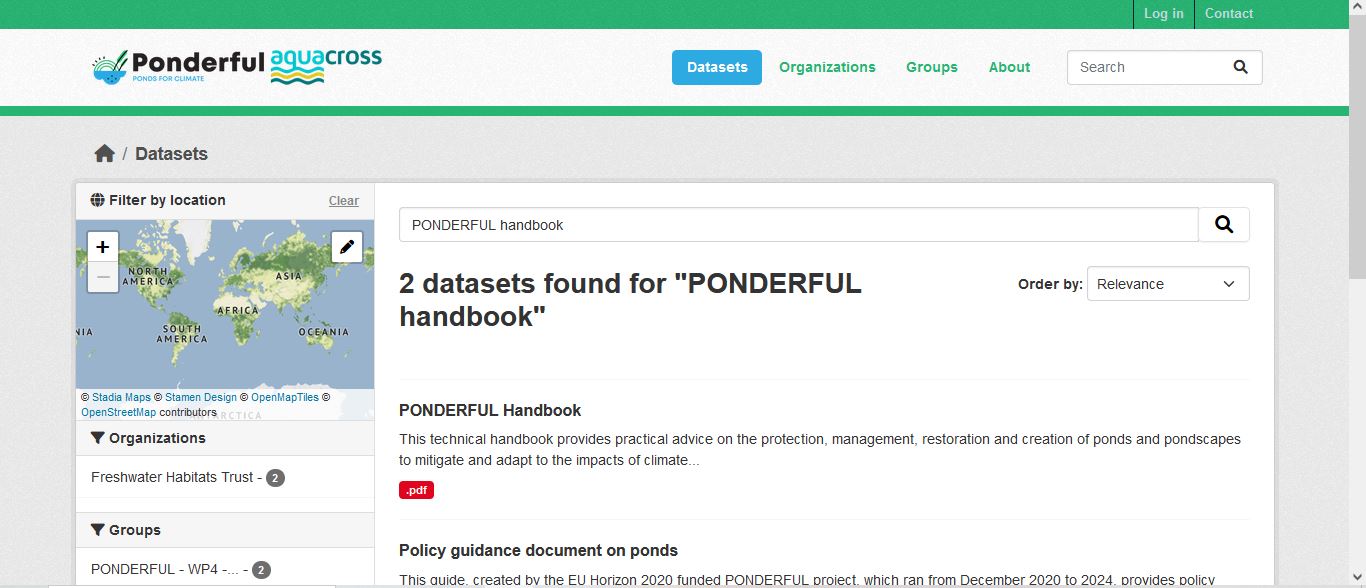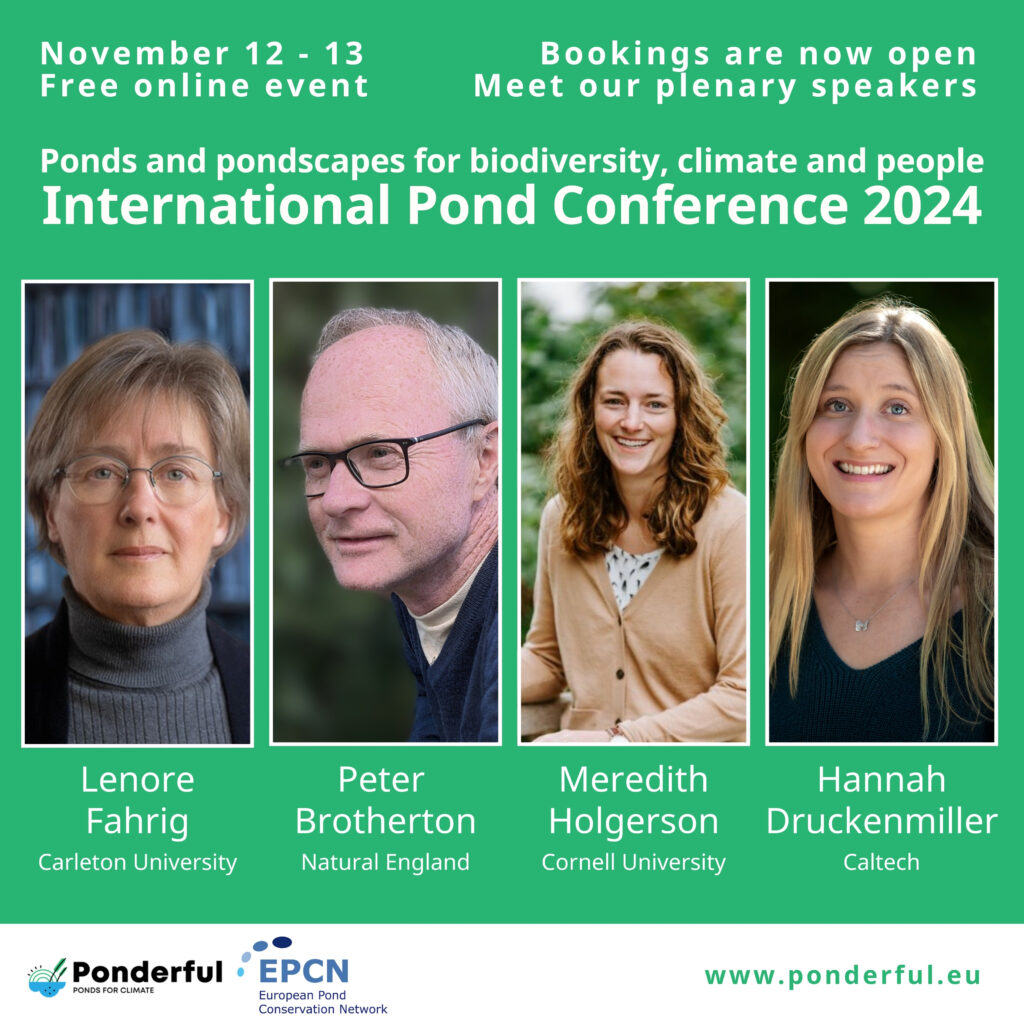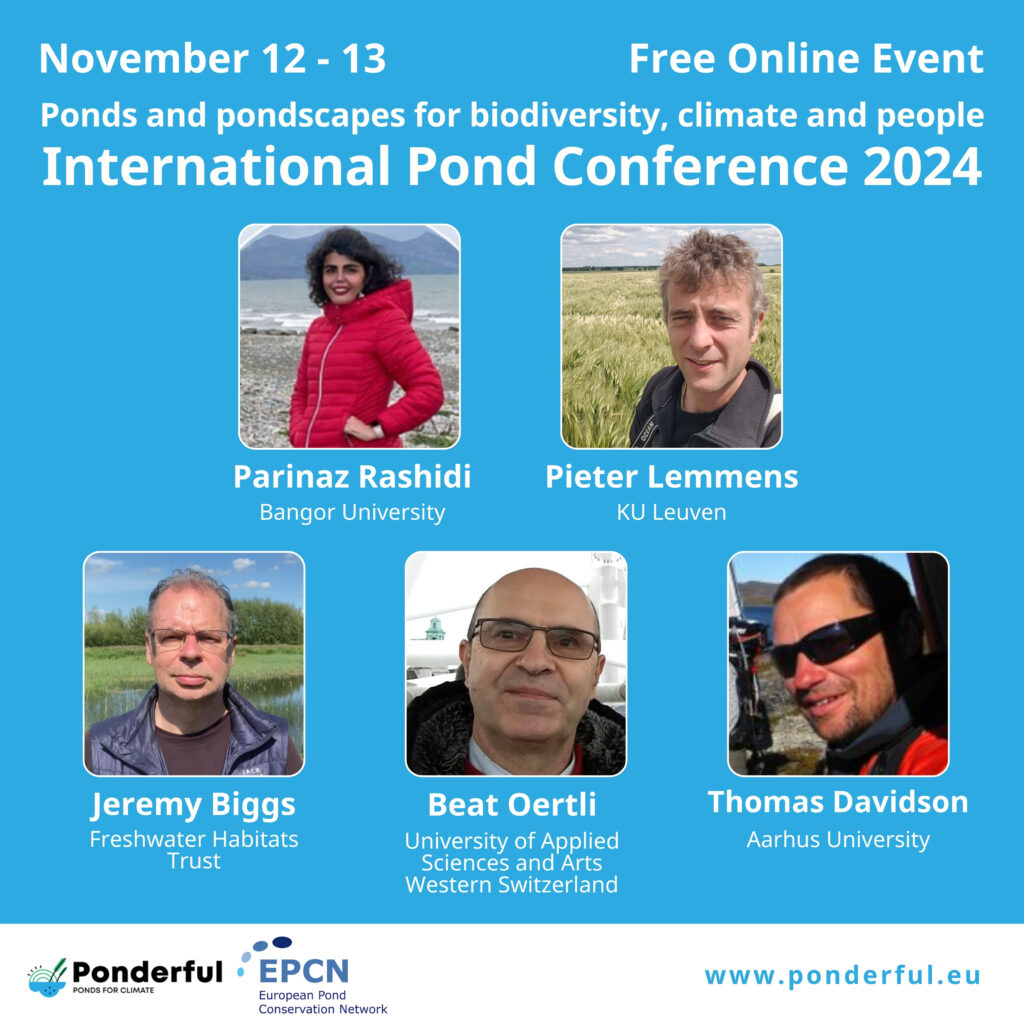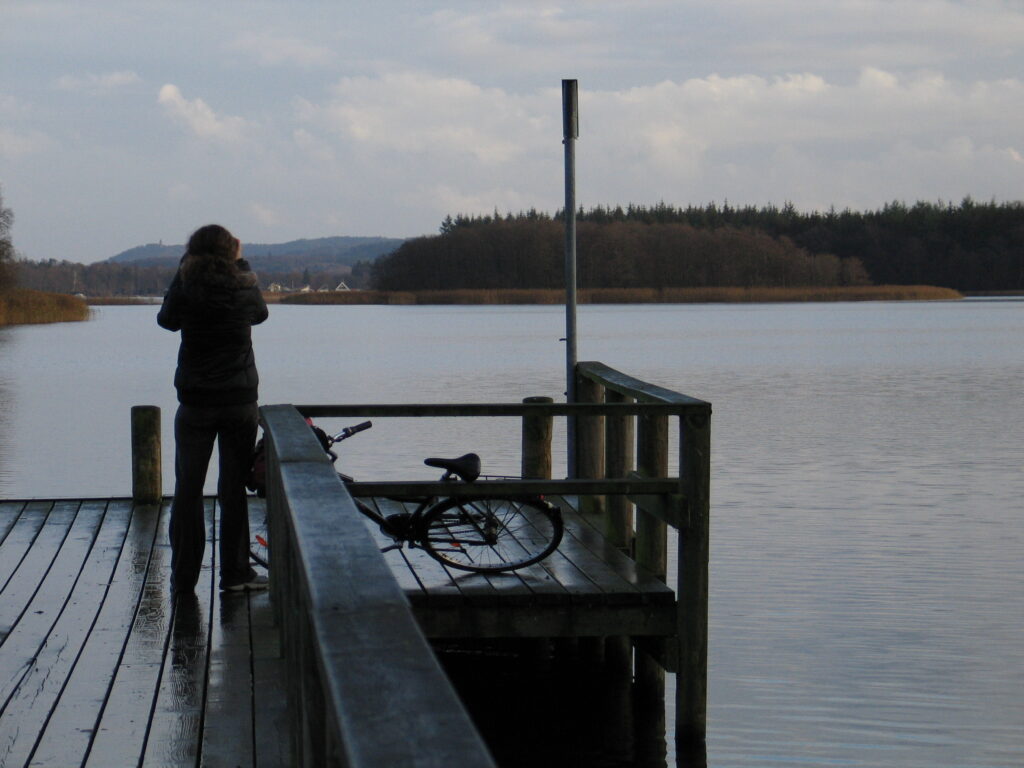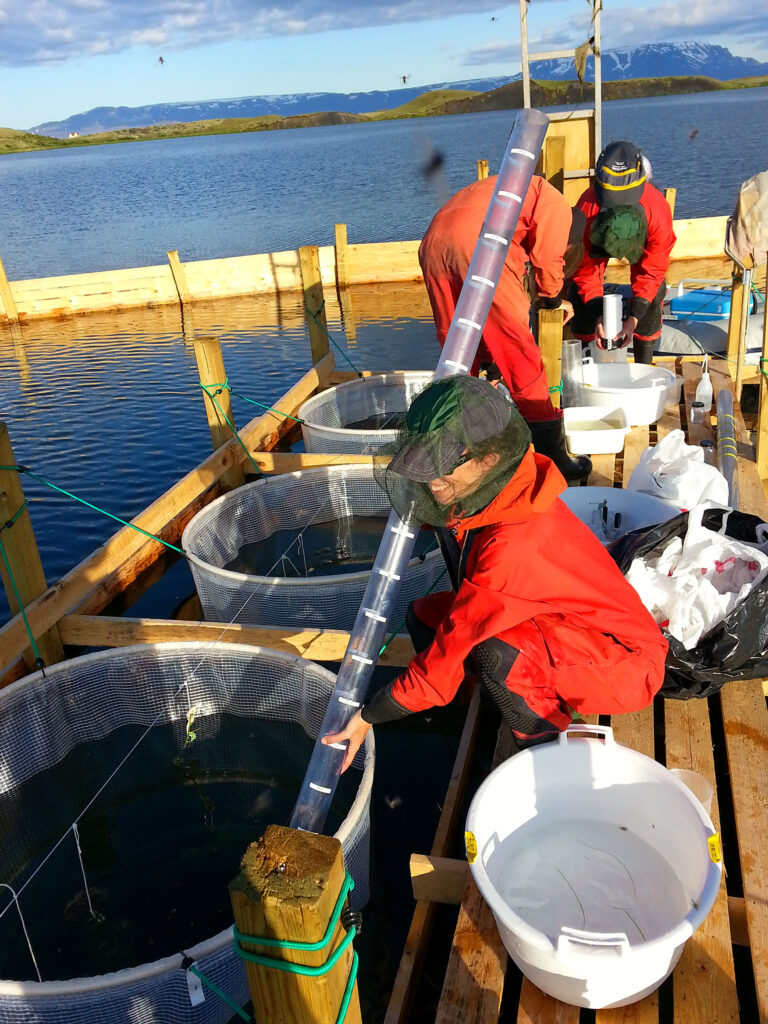As PONDERFUL draws to a close, some of the principal investigators reflect on the project’s key discoveries and what they have learned about ponds and pondscapes.
Associate Professor Malgorzata Blicharska – Uppsala University
Our work in WP1 was focused on the socio-economic, policy, and financial aspects of implementing ponds and pondscapes as nature-based solutions.
Regarding the social values of ponds, we analysed pondscapes’ efficiency and effectiveness in delivering ecosystem services and developed an approach for measuring their performance.

Key insights from our policy analysis are that there is general policy support for nature-based solutions but there are also many limitations and they often lack legal backing. On the other hand, conservation status can help in implementing pond/pondscape nature-based solutions. Our study also showed that local leadership may be more important than policies.
We identified 22 financing instruments for pond and pondscape nature-based solutions, which can be applied to different contexts. Our work also show that it can be difficult to calculate costs and benefits of nature-based solutions.
Dr Joël Robin – ISARA
Our surveys conducted with people living near ponds and pondscapes showed that these habitats greatly enhance quality of life. Focusing on the Nature’s Contributions to People (IPBES), local residents and stakeholders particularly value:
- Biodiversity maintenance
- Physical and psychological experience
- Maintenance of options.

Our work on fishponds has generated new data to help us understand more about these kinds of ponds as carbon sources or sinks. Working with colleagues from Aarhus University, we confirmed that some of these ponds are carbon sinks, while others are carbon sources.
We have also confirmed that a long (one year) period of drying-out allows a regeneration of biodiversity.
Dr Sopan Patil – Bangor University
We focused on percentage changes in biodiversity and ecosystem services indicators at the pondscape level under various climate and land use change scenarios. We also produced maps that identify high-priority areas at the European level where interventions are likely to have the greatest impact under different land use and climate scenarios. These could be used to target pond restoration or creation projects where they could make the most difference to climate change adaptation.
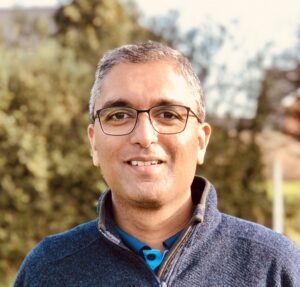
Through our work, we published new results on downscaling global scale land use projections so they can be viewed at local and regional scales.
In work led by Aarhus University, we also developed of an integrative modelling framework to predict the impact of climate and land use change on multiple indicators of biodiversity and ecosystem services. We used the extensive pond data, collected through PONDERFUL fieldwork, to train models that connect the pond ecosystem variables (e.g., Total Nitrogen, Methane and Carbon Dioxide flux, amphibian species richness) with land use and climate variables. The models were then used to predict these variables for multiple future scenarios at both local and continental European scales.
Professor Sandra Brucet – University of Vic – Central University of Catalonia
Our research showed that preserving a pond’s biodiversity (especially in terms of macrophytes and zooplankton) has a positive effect on maintaining ecosystem multifunctionality. In contrast, the deterioration of ponds, both directly and indirectly related to land use (e.g., increased of nutrient concentration in the water) can have a detrimental impact on the conservation of a pond’s ecosystem functions.
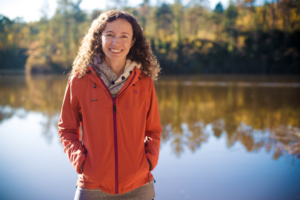
We found that conservation status and land use shape biodiversity in temporary ponds, while sediment moisture and temperature drive CO₂ emissions during the dry phase.
Our work also demonstrated that ponds have a high potential as cost-effective nature-based solutions for enhancing ecosystem and societal resilience to climate change and biodiversity.
Professor Mariana Meerhoff – Universidad de la República, Uruguay
Our research focused on rural artificial ponds, primarily used for watering cattle. The construction of rural ponds has increased significantly over the last three decades, driven by the intensification of agricultural production in Uruguay. However, there is a notable lack of knowledge regarding the ecological status and ecosystem services provided by these ponds beyond water supply.
We found that the water quality of rural ponds varies significantly depending on the intensity of land use within a 100-meter perimeter around the pond. Low-intensity land use (extensive cattle production) was associated with greater aquatic biodiversity, higher habitat complexity, and lower greenhouse gas emissions. Additionally, we discovered that local interventions, such as fencing to prevent direct cattle access and measures to mitigate erosion, can partially counterbalance the overarching effects of land use intensity.

In contrast, rural ponds situated in areas with intensive land use (high density of grazing cattle) and lacking ecological management can serve as sources of cyanobacteria and facilitate the spread of invasive exotic species.
Our findings underscore that, under certain regional and local conditions, rural ponds hold high potential as cost-effective, nature-based solutions for enhancing both ecosystem and societal resilience to climate change and climate variability.
Dr Dani Boix – University of Girona
Our research focused on the biodiversity of macroinvertebrate community and the importance of the pond condition and the climate zone for their composition and structure. Moreover, we performed a study on the macroinvertebrate colonisation of newly created ponds in a coastal area.

The results of this study suggest that differences between old and new ponds only exist in the first year after creation for both taxonomic and functional composition, but differences between low- and high-connected ponds were observed even after six years after creation. Therefore, results highlight the crucial role of hydrology to understand the colonization process especially when assessing restoration success.
Professor Carl Sayer – University College London
Our case study work in WP2 was focused on pond ecosystem services and in particular the consequences of pond restoration for greenhouse gas emissions as well as the effects of varying pond hydrology on pollinator diversity and pollination services.
Pond restoration by removing woody vegetation and soft sediment has been shown to substantially increase pond and pondscape biodiversity, as well as reducing tree-associated evapotranspiration which makes ponds less likely to dry up. Building on this previous work, our pollinator case study showed that, when ponds possess water, they are more favourable to a higher number of pollinator species and in turn have more complex and resilience plant-pollinator networks. The greenhouse gas emissions case study showed that pond restoration significantly reduces pond-derived GHG emissions, with this especially true of methane.
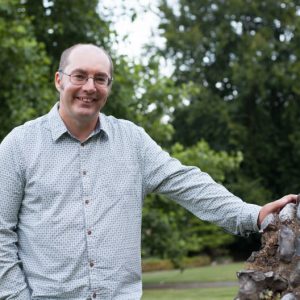
We hence strongly concluded that pond restoration has two major ecosystem service-related benefits which adds more weight behind this approach as detailed in the PONDERFUL Technical Handbook.
Professor Thomas A Davidson – Aarhus University
Our research in the PONDERFUL focussed on how pond biodiversity is shaped by land use and climate. In addition, Aarhus University were responsible for the analysis of greenhouse gas samples collected as part of the stratified survey, case studies, experiment and demonstration sites.
We found that the ponds surveyed were in general sources of greenhouse gases emitting both methane and carbon dioxide, with carbon dioxide dominating emissions. Conversely most ponds were sinks of nitrous oxide. We recorded extremely large variation in emissions and the general pattern was that nutrient enrichment (in particular nitrogen) and higher annual average temperatures led to the largest emissions.

The study of our 20-year-old mesosocms experiment allowed us to quantify carbon burial and compare that with emissions. We showed that increased nutrients and higher temperatures can combine to turn ponds from potential sinks of carbon to overall sources by increasing methane emissions.
In a study led by UCL we also showed that pond restoration, by removing trees from terrestrialised ponds, can dramatically reduce greenhouse gas emissions.
We also learnt that a stand-up paddle board is the key to efficient pond sampling!
Professor Matías Arim – Universidad de la República, Uruguay
The PONDERFUL consortium undertook fieldwork and theoretical studies to learn more about the connection between land cover, climate conditions, biodiversity, and ecosystem functioning.
Our research covered different spatial scales:
- An individual system, assessing the importance of the interaction of groups of species on the biodiversity of ponds and how they react to large-scale disturbances.
- Comparing different configurations of real pondscapes to analyse the characteristics of real landscapes and how they could enhance biodiversity.
- How temporary, seasonal, and permanent ponds connect and their combined impact on biodiversity.
- For each of the freshwater ecoregions of Europe, the importance of any single area (10km by 10 km) for the connectivity of freshwaters.
- The potential effects of climate-induced degradation of freshwater landscapes on biodiversity. Permanent, temporary, and ephemeral freshwater showed different sensitivity to landscape degradation. In general, species with larger dispersal distances that inhabit small, uniform habitats were more affected by the loss of water.

PONDERFUL research points to nature-based solutions features that could achieve greater impacts with the same resources in terms of Nature’s Contributions to People. These findings could guide ecosystem management and the implementation of nature-based solutions.
Professor Beat Oertli – HES-SO
We demonstrated how pond and pondscapes are efficient and cost-effective nature-based solutions for addressing societal challenges, especially those linked to climate change (biodiversity crisis, warming environment, water scarcity, flood risks and greenhouse gas emissions). This was achieved through an inventory of 183 nature-based solutions in Europe, coupled with eight PONDERFUL demonstration-sites (DEMO-sites) where 50 success stories have been evidenced.
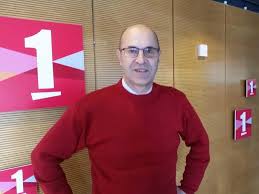
Using the knowledge generated through PONDERFUL, we provided stakeholders and policy makers with a set of new science-based tools for implementing pond/pondscape nature-based solutions
The tools are:
- CLIMA-Pond designs presenting a prototype of a pond as a nature-based solution for addressing climate change challenges in natural, rural and urban landscapes.
- A technical handbook on restoring, managing and creating ponds and pondscapes as nature-based solutions. It includes results from the PONDERFUL project and expertise from across the consortium, presented through infographics, tables, text and photographs. The document includes contributions from across the partnership and was also developed using feedback from the third stakeholder workshop. The Handbook is fully illustrated and produced in colour in 11 languages, easily accessible as an electronic pdf. This allows its international reach among our target audience, which includes landowners, practitioners, policymakers, business owners.
- A guidance document for policy makers. It recommends steps that can be taken at local, regional, national or international level to effectively use ponds and pondscapes as nature-based solutions for climate change mitigation and adaptation. Available to download, the policy guidance document is fully illustrated and has been translated into 11 different languages.
- A multi-criteria decision making tool that helps in the implementation of pond and pondscapes as nature-based solutions, by forecasting the potential Nature’s Contributions to People/ecosystem services and biodiversity benefits delivered under various scenarios of climate change and under different management actions.
Professor Jeremy Biggs – Freshwater Habitats Trust
Throughout PONDERFUL, we’ve shared insights on ponds and pondscapes as nature-based solutions, stimulating discussions on their role in climate change adaptation. Through social media, our newsletter and stakeholder engagement, we’ve highlighted the importance of small waters. The PONDERFUL consortium united 50 leading freshwater experts to welcome the resolution on Conservation and Management of Small Wetlands, introduced by The Convention on Wetlands.
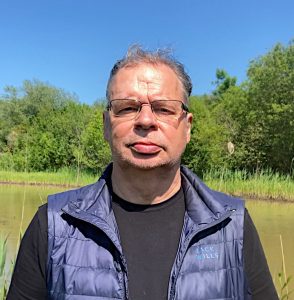
Members of the consortium contributed to the PONDERFUL technical webinars and the International Pond Conference, co-hosted with the European Pond Conservation Network (EPCN), which drew more than 500 attendees.
Project partners also created two animated videos, Exploring the Importance of Ponds and How to Create a New Pond, available on YouTube in multiple languages. The former won the Audience Award at the Braga Science Film Fest. These videos, alongside new information posters and policy briefing notes, ensure PONDERFUL’s legacy, promoting the role of ponds and pondscapes in climate change mitigation and adaptation.
PONDERFUL research papers can be viewed here, with more due for publication in the future.


